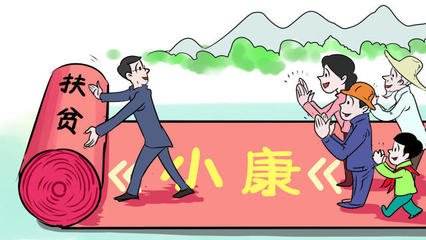The figures were released during a press conference on the sidelines of the ongoing Two Sessions.
Director of the country's top poverty relief agency, Liu Yongfu says massive programs are being carried out to channel financial support to those in need.
"We are implementing micro-credits for poverty relief, re-lending programs for poverty relief and financial bonds for poverty relief, and through these measures, over one trillion yuan are being provided annually to poverty-stricken areas and relief projects directly related to China's fight against poverty."
The micro-credits program for poverty relief was adopted in 2015.
It ensures officially registered poverty-stricken households get a three-year loan of up to 50,000 yuan for their start-ups without any guarantee or mortgage.
As of January, a total of 550 billion yuan loans have been granted this way.
China aims to eradicate poverty by 2020.
Last year, it lifted nearly 14 million rural people out of poverty and is planning to help another 10 million this year.

While providing financial support, the Chinese government has also tried to help impoverished people to get rid of poverty through relocation.
Delivering this year's Government Work Report, Premier Li Keqiang announced that 2.8 million people were relocated from inhospitable areas last year.
Liu Yongfu suggested efforts are also being made to ensure the relocated make a living in their new home.
"Firstly, we have carefully planned the relocation of our population. We cannot just relocate people and leave them in the new place. Where people can be relocated and how people can make a living after relocation is a question that needs to be studied."
To achieve that, the official called for more to be done to develop industries that suit local conditions while turning the relocated people into rural workers through training.
China defines people with less than 2,300 yuan in annual income as living below the poverty line.
Since 2012, China has seen the number of impoverished rural residents decline from nearly 100 million to less than 17 million.












